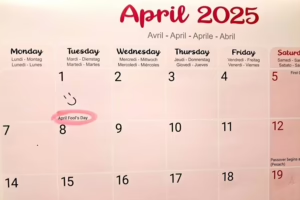For businesses operating in the UK, the Value Added Tax (VAT) number is a crucial element of daily operations. Whether you’re invoicing clients, filing tax returns, or simply keeping your records in order, knowing how to find VAT number is essential. This guide will walk you through the process of finding your VAT number, why it’s important, and what to do if you’ve misplaced it.
What is a VAT Number?
A VAT number is a unique identifier assigned to businesses that are registered for VAT in the UK. This number is issued by HMRC and is required for businesses that meet the VAT threshold, which is currently set at £90,000 in taxable turnover. The VAT number is used to track VAT transactions and ensure that businesses are complying with their tax obligations.
Why is Finding Your VAT Number Important?
Your VAT number is more than just a random sequence of digits; it’s a critical component of your business identity in the UK. Here are some reasons why finding and knowing your VAT number is essential:
- Invoicing Clients: When you invoice clients, your VAT number must be displayed on the invoice. This allows clients to reclaim VAT on their purchases.
- Filing VAT Returns: You’ll need your VAT number when submitting your VAT returns to HMRC. This ensures that your payments are correctly attributed to your business.
- Compliance: Failing to include your VAT number on official documents can lead to fines and penalties. It’s a legal requirement to display your VAT number on invoices and other official paperwork.
- Business Verification: Other businesses may request your VAT number to verify your VAT status before entering into contracts or business agreements.
How to Find Your VAT Number
If you’re a business owner or an individual who needs to locate your VAT number, there are several methods you can use. Below, we break down the most common ways to find your VAT number in the UK.
1. Check Your VAT Registration Certificate
The first and most straightforward way to find your VAT number is to check your VAT registration certificate. This document is issued by HMRC when you first register for VAT. It contains your VAT number, along with other important information such as the date of registration and your VAT effective date.
Steps:
- Locate the VAT registration certificate in your business records.
- Look for a reference number, usually beginning with “GB” followed by a series of numbers. This is your VAT number.
2. Look at Your Business Invoices
If you can’t find your VAT registration certificate, the next place to check is your business invoices. As mentioned earlier, VAT-registered businesses are required to include their VAT number on all invoices issued to clients or customers.
Steps:
- Review your issued invoices, particularly those sent to clients after your VAT registration.
- Your VAT number should be displayed prominently on the invoice, typically near your business name and address.
3. Check Your VAT Returns
If you’ve already filed VAT returns, your VAT number will be listed on these documents as well. You can find your VAT returns either in your business records or by logging into your HMRC online account.
Steps:
- Access your HMRC online account using your Government Gateway credentials.
- Navigate to the section for VAT returns.
- Open a recent VAT return document to locate your VAT number.
4. Use the HMRC Online Services
HMRC provides online services that allow you to access a wide range of information related to your business, including your VAT number. If you’re registered for online services, you can log in and retrieve your VAT number quickly.
Steps:
- Go to the HMRC website and log in to your account using your Government Gateway ID and password.
- Navigate to the “Business Tax” section.
- Select “VAT” from the menu, and you should see your VAT number displayed on the screen.
5. Contact HMRC Directly
If you’ve exhausted all other options and still can’t find your VAT number, you can contact HMRC directly for assistance. They can provide you with your VAT number once you’ve verified your identity.
Steps:
- Call HMRC’s VAT helpline at 0300 200 3700.
- Be prepared to provide information to verify your identity, such as your business name, address, and registration details.
- HMRC will confirm your VAT number over the phone or send it to you by post.
What to Do if You’ve Lost Your VAT Number
If you’ve lost your VAT number and unable to retrieve it through the usual methods, contacting HMRC should be your next step. They will be able to assist you in recovering your VAT number so you can continue your business operations without interruption.
Tips for Keeping Your VAT Number Safe
To avoid the hassle of searching for your VAT number in the future, consider these tips for keeping it safe:
- Store Your VAT Registration Certificate Safely: Keep your VAT registration certificate in a secure location, such as a locked filing cabinet or a secure cloud storage system.
- Include Your VAT Number in Your Business Records: Ensure that your VAT number is included in all important business documents, such as your accounting software, invoices, and correspondence.
- Use a Digital Filing System: Store digital copies of your VAT registration certificate and other important documents in a secure, backed-up digital filing system. This makes it easier to retrieve your VAT number whenever you need it.
- Regularly Review Your Documents: Periodically review your business documents to ensure that your VAT number is correctly listed and that you have easy access to it.
Finding your VAT number in the UK is a straightforward process if you know where to look. Whether you’re checking your VAT registration certificate, business invoices, or HMRC online account, there are several ways to retrieve this essential piece of information. Remember, keeping your VAT number safe and easily accessible is crucial for the smooth operation of your business and compliance with UK tax laws. If you’re ever in doubt, don’t hesitate to contact HMRC for assistance.
The post How to Find Your VAT Number in the UK first appeared on HR News.



